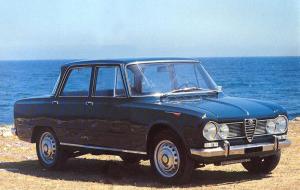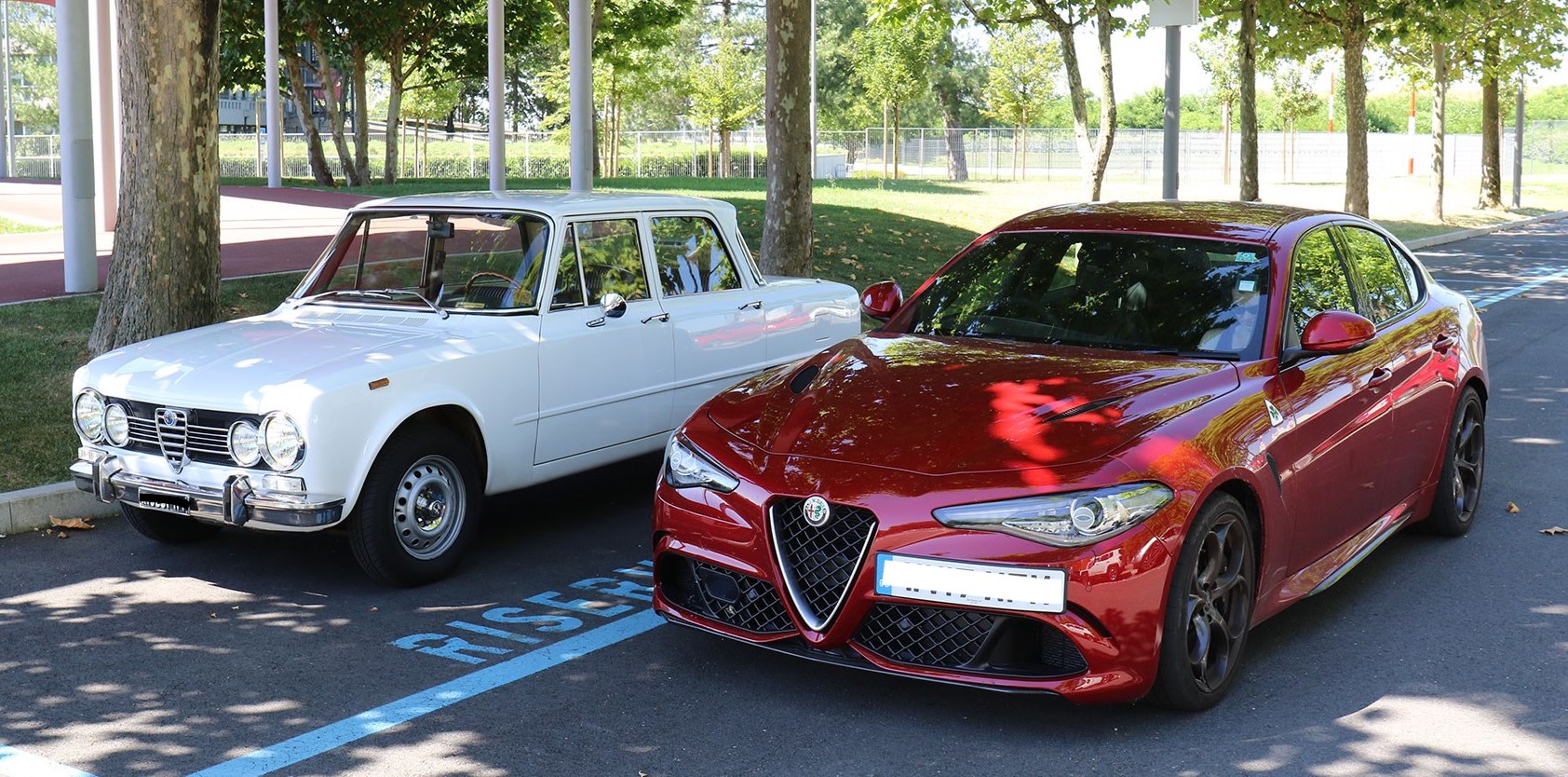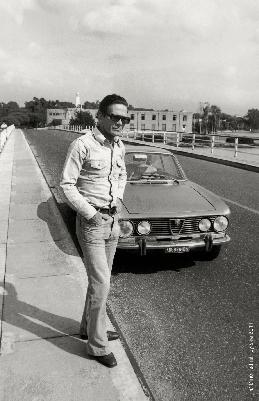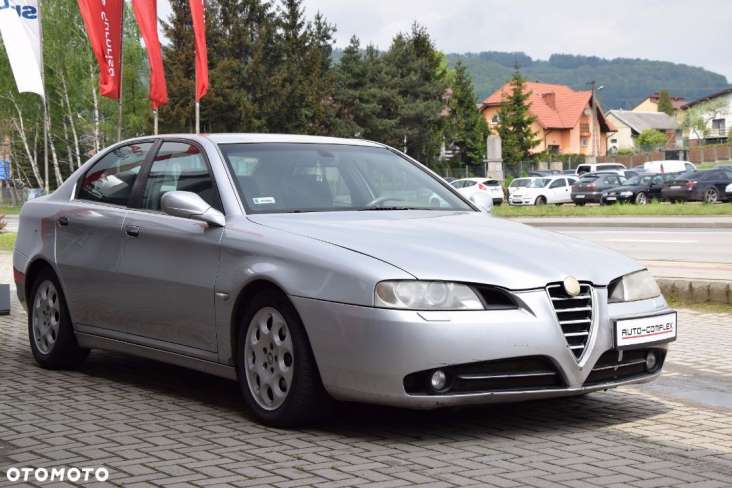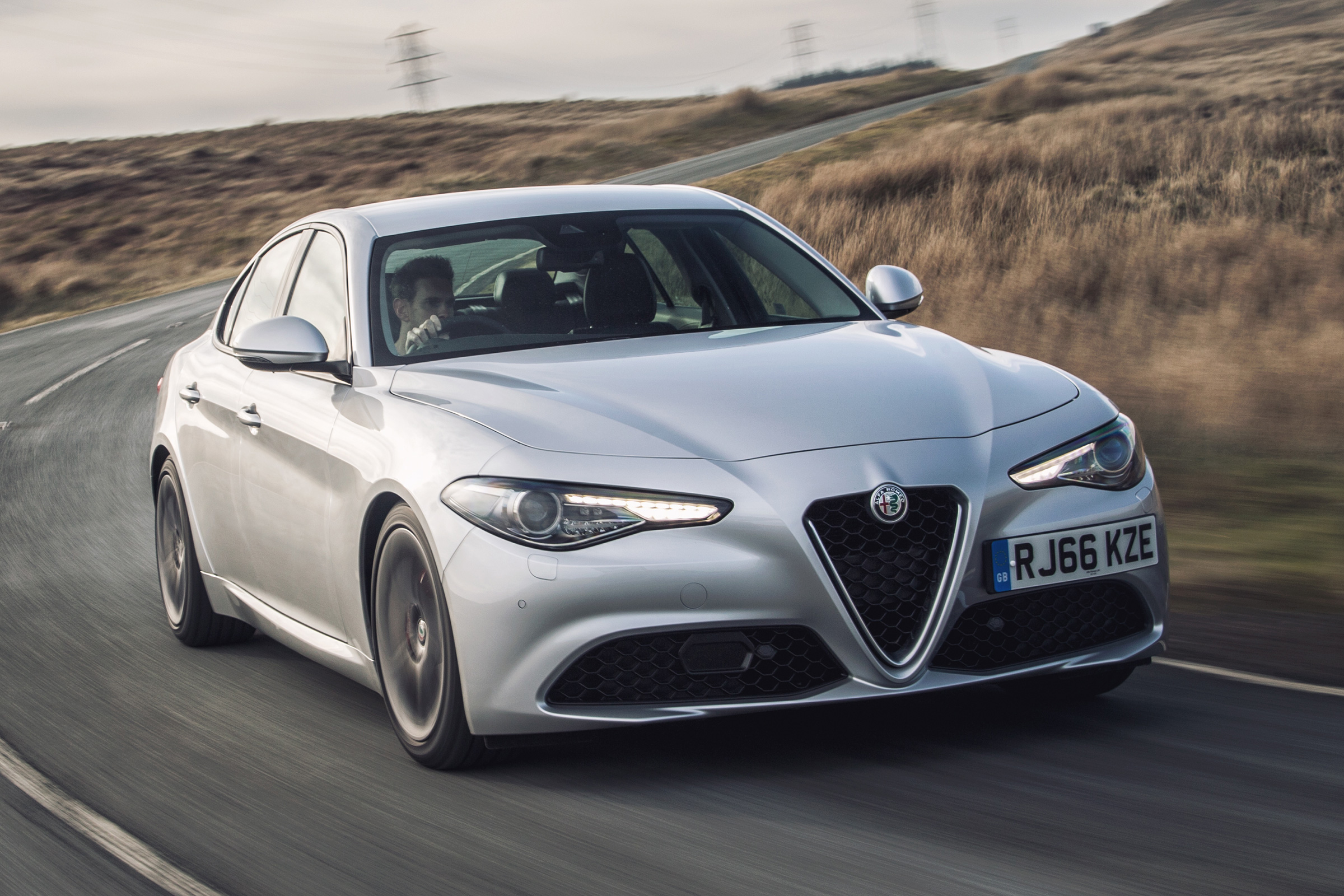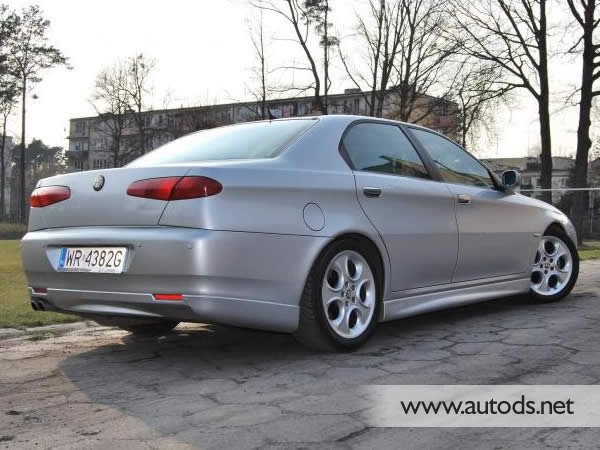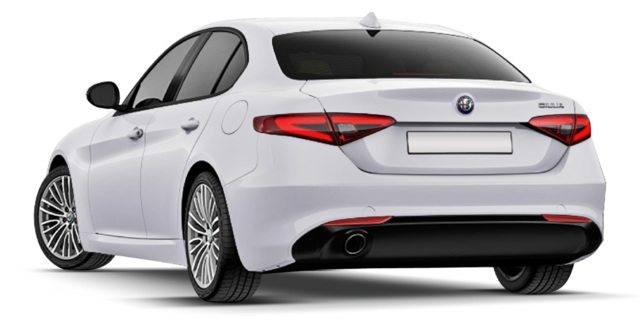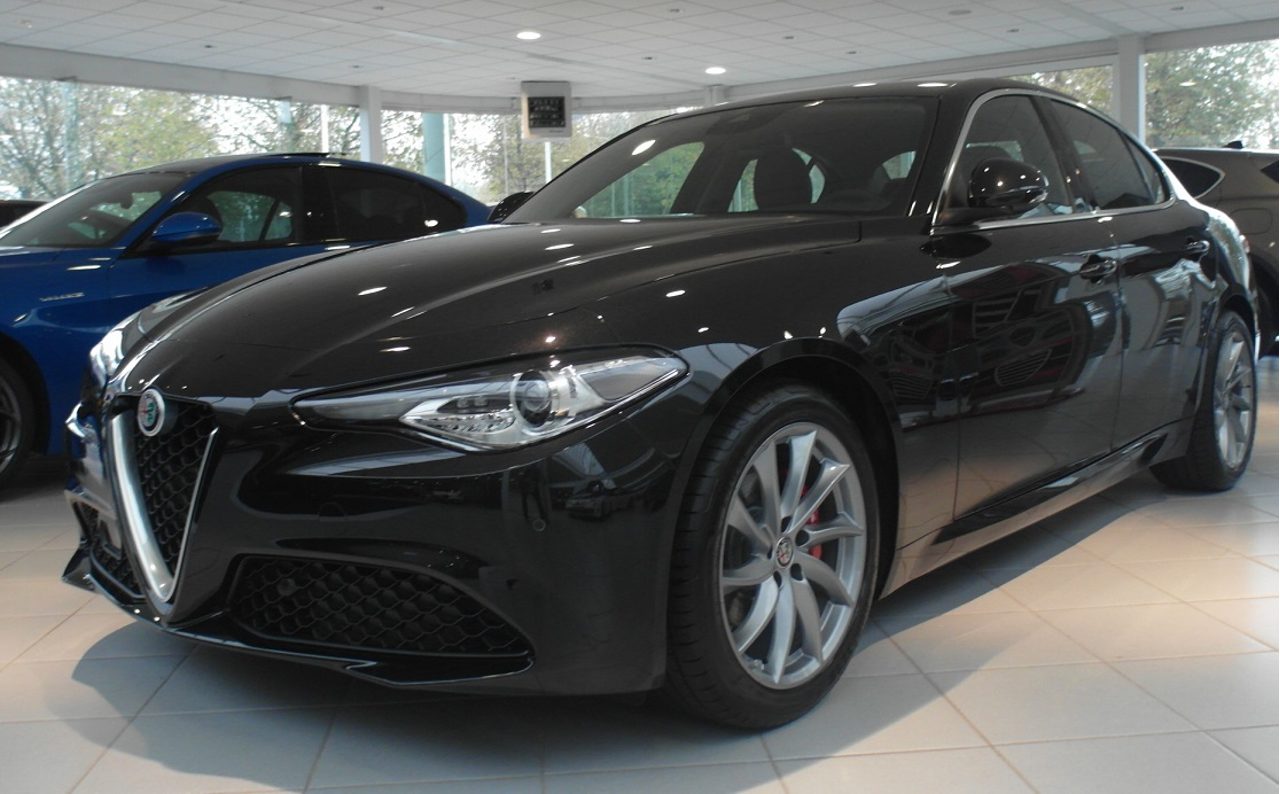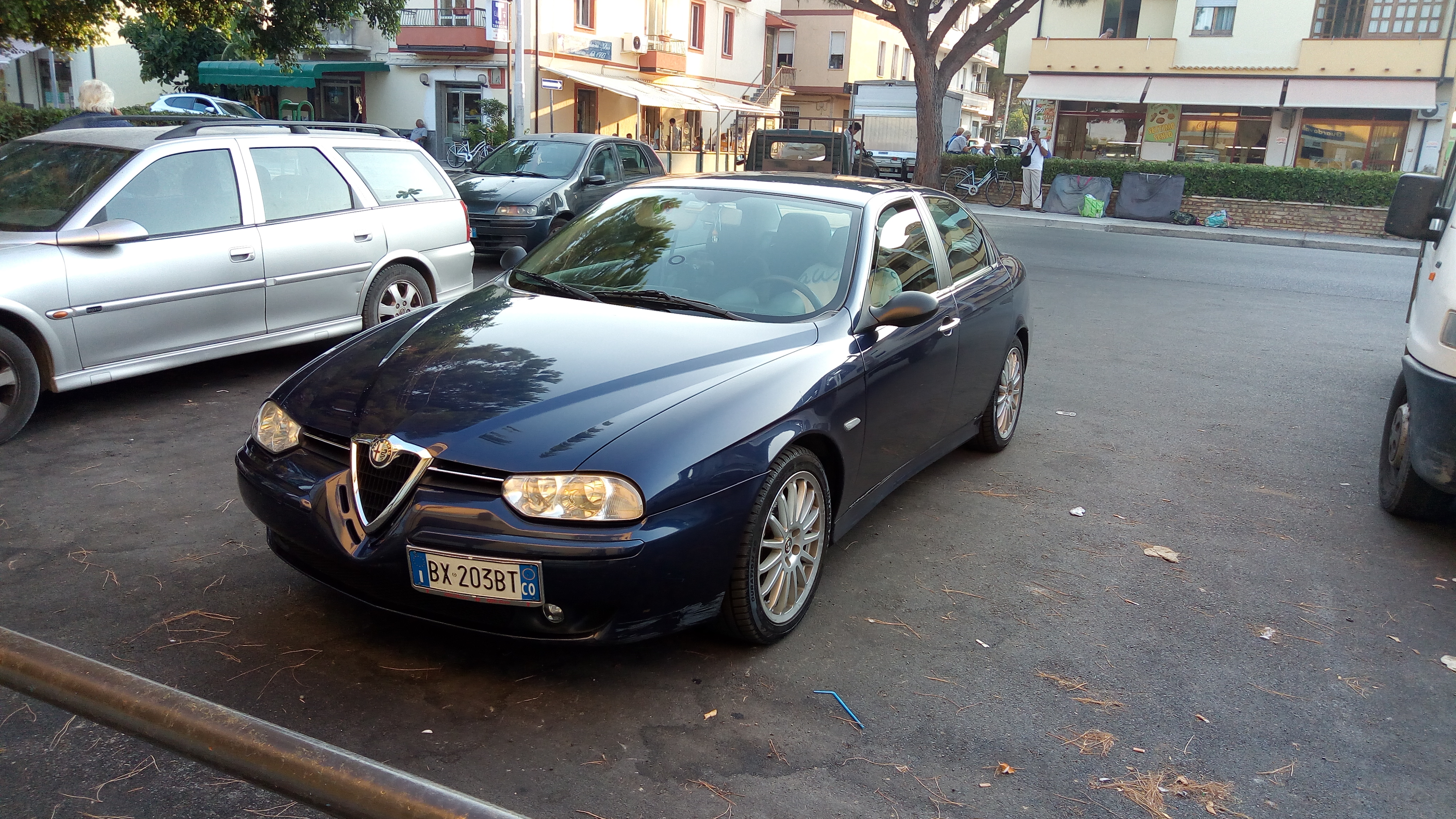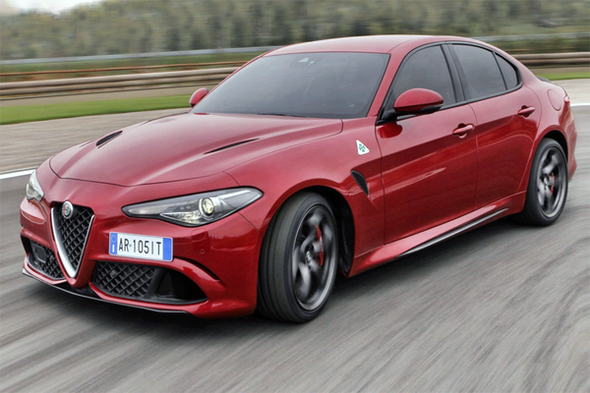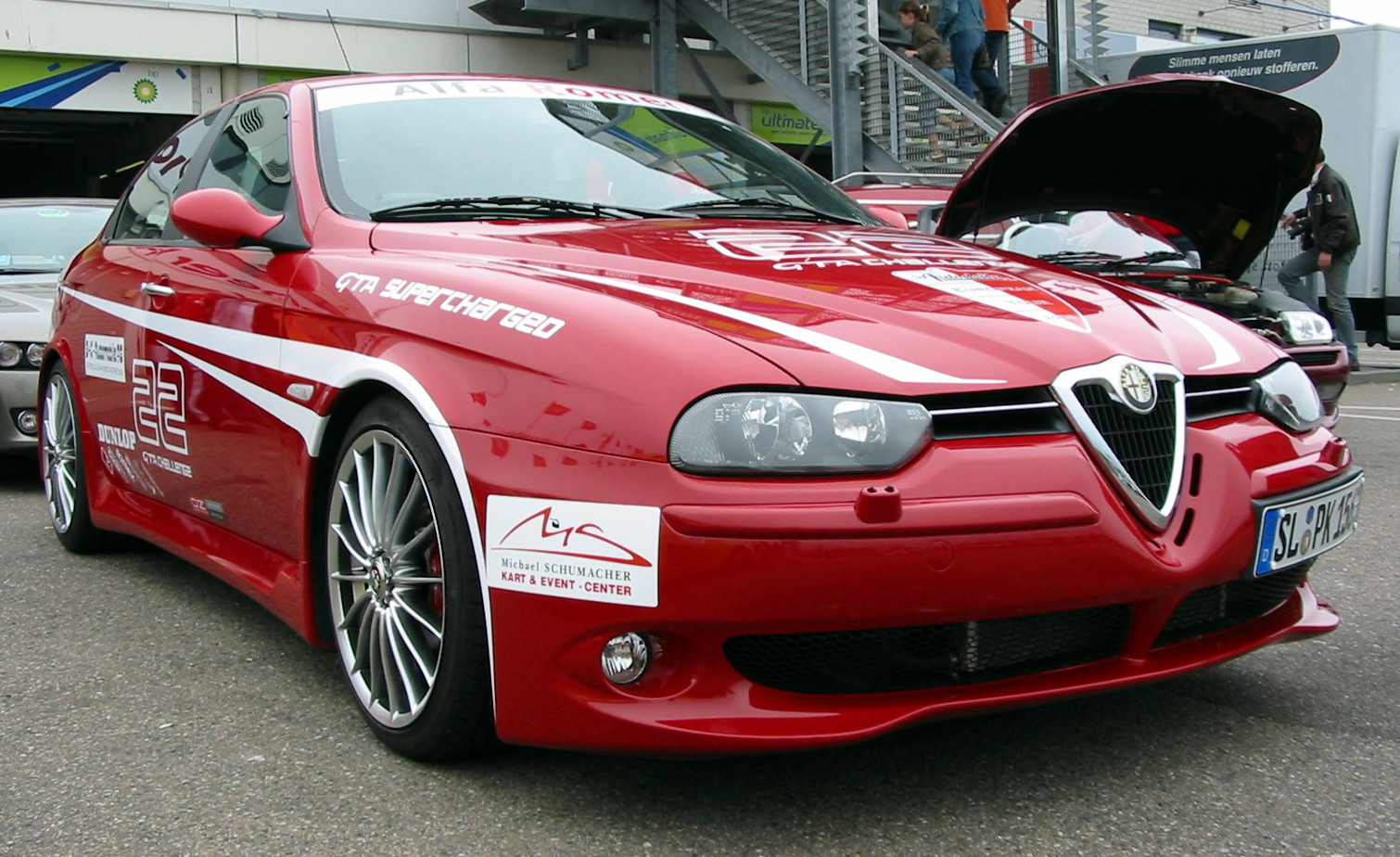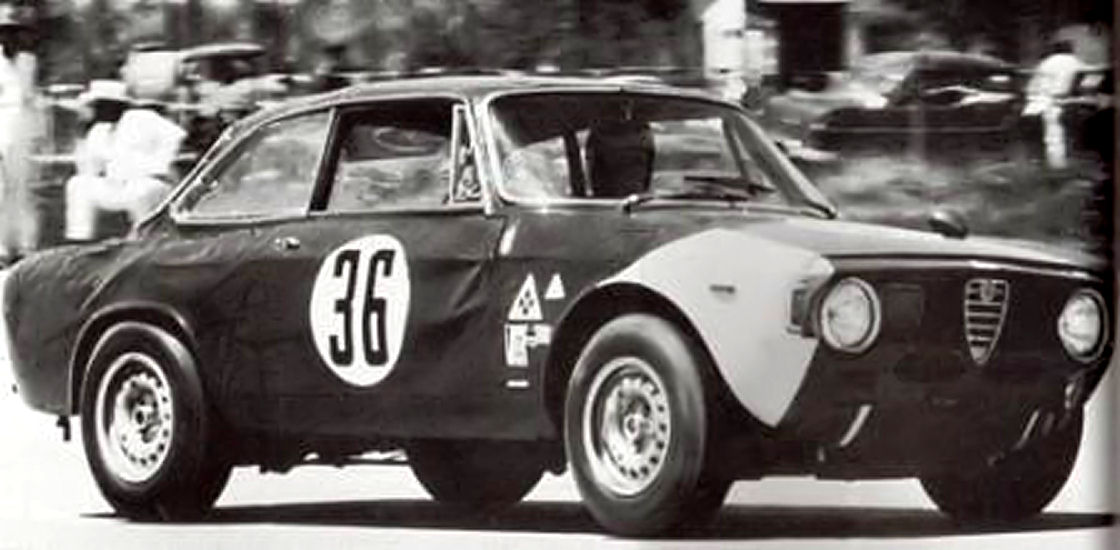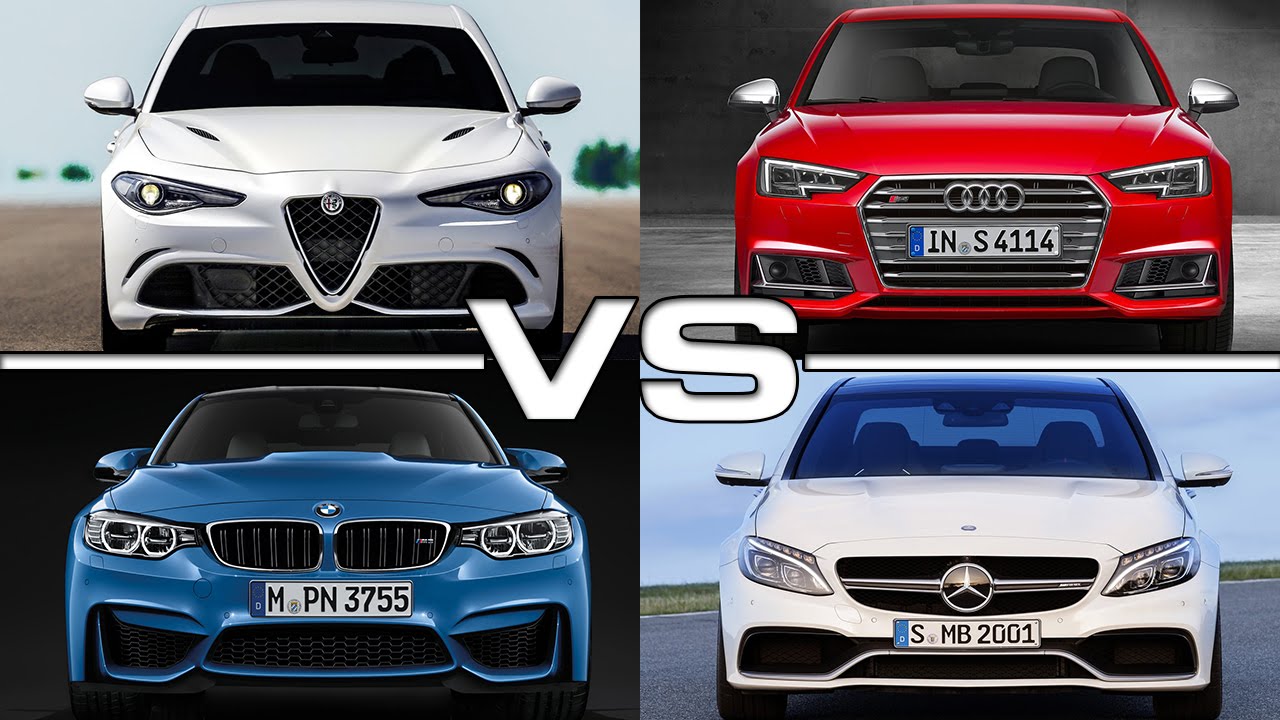Why Alfa Romeo?
“Observe with what foresight the mother nature of mankind took care to spread a pinch of madness everywhere. She infused man with more passion than reason so that everything would be less sad.
If mortals would guard against any relationship with wisdom, old age would not even be there. If only they were more fatuous, cheerful, dissolute, they would happily enjoy eternal youth. Human life is nothing but a game of folly”.
Erasmus of Rotterdam (1466-1536) – The Praise of Folly
Il cuore ha sempre ragione (the heart is always right) – Alfa 159 SW commercial of 2006 – Erasmus of Rotterdam, The Praise of Folly
I love Alfa Romeos for their uniqueness: each model has Alfa history in it. The most modern models are designed from the heart to the glorious Alfa Romeos of the past. I have an Alfa 159 and I see, hear, feel and touch the presence of the early Giulia and Giulietta, 1900, 1750, GT and so on… In this sense it is no different from driving an old Alfetta or a modern Stelvio. They are all there, along with the past, the different ways of life of years gone by. Always forward but never forget…
An English journalist from the industry describes the difference between Alfa Romeos using the comparison of the human body: ‘if the Toyota is the brain, the Aston Martin the face, the Alfa Romeo is undoubtedly ‘heart and soul…’ It is well known that Alfisti love Alfas regardless of their flaws. Today there is no denying the advanced technological level of an Audi, the class of a BMW, the reliability of a Mercedes or German cars in general, but they all lack something. The heart, precisely. Other cars can have it all but they will never be an Alfa. From its birth, Alfa Romeo represented Italian excellence. While today German manufacturers have a reputation for superior quality, reliability and technology, in its early days it was Alfa Romeo that set the state of the art. Alfa cars were unreachable, cars to be dreamt of or imitated. They set the bar, Audi and BMW were certainly not up to it, but they learnt a lot from Alfa Romeo and perhaps today they are technologically ahead, although there would be much to discuss about this: their success is certainly based on quality but also on the greater economic availability from which derives the possibility of a much wider offer, but also on the negative prejudice from which the Italian car unjustly suffers today with respect to the fashion and status symbol factor that favours the powerful German manufacturers. Undoubtedly, however, Alfa Romeo is the only car manufacturer in the world that can boast such an important and fascinating history.
The initial idea came from a French entrepreneur, Alexandre Darraq, who built a car factory in Naples. He was forced first to move to Portello, near Milan, and then to sell his ailing company to other Lombard entrepreneurs. The name of the new company established in 1910 was ALFA (Anonima Lombarda Fabbrica Automobili – achronim meaning Lombard Automotive Factory Limited). After five years there was again a need for financing and the Neapolitan engineer Nicola Romeo, owner of an adjacent company, entered the capital and changed the name to Alfa Romeo. At the time, the projects that came out of Portello first and then Arese were bold, uncompromising, as daring as the pilots who drove the Alfas to victory, the legendary Tazio Nuvolari above all. Time had to put some sense into those projects, the survival of the brand itself depended on it. But even today, Alfas and those who drive them are characterised by a certain reluctance to follow stereotypes, prejudices. And in a way it’s about never losing sight of the child inside us, in the most positive sense of the word.
As a child in the 1970s, I was passionate about the Giulia. My father was in the police force and I used to think of him when I saw Alfa Romeo panthers speeding through Rome. That’s how it started. I don’t see anything wrong with it. You can think what you like about the police force, sometimes rightly or wrongly you can accuse them of unpleasant things, but there is no doubt that they are necessary. And then we are talking about my father, a good and honest person, and a child who, in a normal family, follows his example and admires him. And cars are what they are. From a rational point of view they pollute, they congest cities, they are a not always nice business, the symbol of consumerist power, but they undeniably serve us and have become an integral part of our civilisation.
Cars have fascinated millions of people and even prominent intellectuals like Pier Paolo Pasolini himself, who, as the alfista that he was, drove the stunning Giulia GTV 2000, my favourite today. He was also someone who said that the real proletarians of the “years of lead” were the policemen on poor state salaries, who couldn’t afford university like the rebellious students they were pitted against.
A model identical to the one Pasolini drove on the night he was murdered was exhibited for a period in Rome at the Museum of 21st Century Art, the Maxxi, by a Roman artist, Elisabetta Benassi, who is also the owner of the GTV. The title of the work is precisely Alfa GT Veloce (2007) and it was installed for a period in a darkened room with the headlights on to evoke the dark atmosphere of that tragic night. In the words of the artist herself: “The car is interesting in itself, as an object, as a lump of imagination, it has a dual nature, it moves and it occupies, it transports me and it can kill me”.
In the documentary ‘L’Affaire Pasolini’ by the Franco-German channel Arté, the Alfa Romeo Giulia GTV is a starring character
I can’t do without the car. I always drive happily if it’s an Alfa Romeo. It’s not the same with other cars. Nor am I the classic Italian ‘women and motors’ male who drives it to the body shop at the slightest scratch, who washes it with maniacal care every weekend or who is anxious after parking it in an unfamiliar place. But cars have always fascinated me since I was a child. It happens to many children, including my own, to be struck by the roar of the engines, the spinning wheels and the mysterious mechanism that makes them run on the asphalt. So it was for me and so I see it happening for my son. Who has never played with toy cars? There are those who see the car as a mere means of transport, a slavery to which our consumerist society has forced us. And you can’t blame them! The important thing is not to exaggerate, one way or the other. Demonising the car is just as open to criticism as idolising it, or worse, coveting it in order to strut around in it, as a snobbish status symbol.
Instead, a car can be seen as the meeting of technique and art, of engineering and design, which have evolved throughout the history of the car and have caused them, some more than others, to become icons of their respective eras. For several years now, the landscapes of our cities have been marked by cars, always more for the bad than for the good. The models of a decade give a city the appearance of that decade. The way of life of an era can also be remembered through the cars on the road at that time. It is like that for me. I really like to remember which cars populated the streets when I was 10, 20, 30 years old…. It’s a kind of nostalgia, a ‘how we were’ that you can also play with something else, for example music. I chose Alfa Romeo today also because for some reason it reminds me of the time when I was a child in the 1970s, a moment in my childhood that I am trying to keep in touch with, partly out of a nostalgia that is perhaps a symptom of growing old, and partly so that I can relate to my son better, in an attempt not to lose sight of the child I used to be.
The sight of the Alfa Romeo symbol as I drive and the characteristic Oo=V=oO front end takes me back to the past and the blissful innocence of those years, a world without mobile phones or smartphones, where people sweated playing in the street, not on the playstation, and mum shouted out of the window to come up when it got dark; we played together instead of chatting, we got our hands dirty without fear of germs, we didn’t look for friends with a text message but went to the doorbell, we didn’t ‘post’ thoughts on social networks but talked about them in person. Nostalgia of 50-year-olds? Certainly yes, but coming back to cars, Alfa Romeo is the only one that carries in its current models the clear memory of past history, which for me is the memory of those years, which coincide with the glorious period of the Arese company.
Often the history of an automobile manufacturer is linked to the history of a country. For Alfa Romeo this is quite a topic. There is a widespread opinion among Alfisti that owning an Alfa Romeo is tantamount to owning a piece of history. Driving an Alfa is a bit like driving all the Alfas that came before it. Each model carries within it the legacy of the past. In short, they are not simply cars, they are made with the heart, at least as much heart as is possible in today’s world dominated by the law of marketing. Alfas will always have more heart than others.
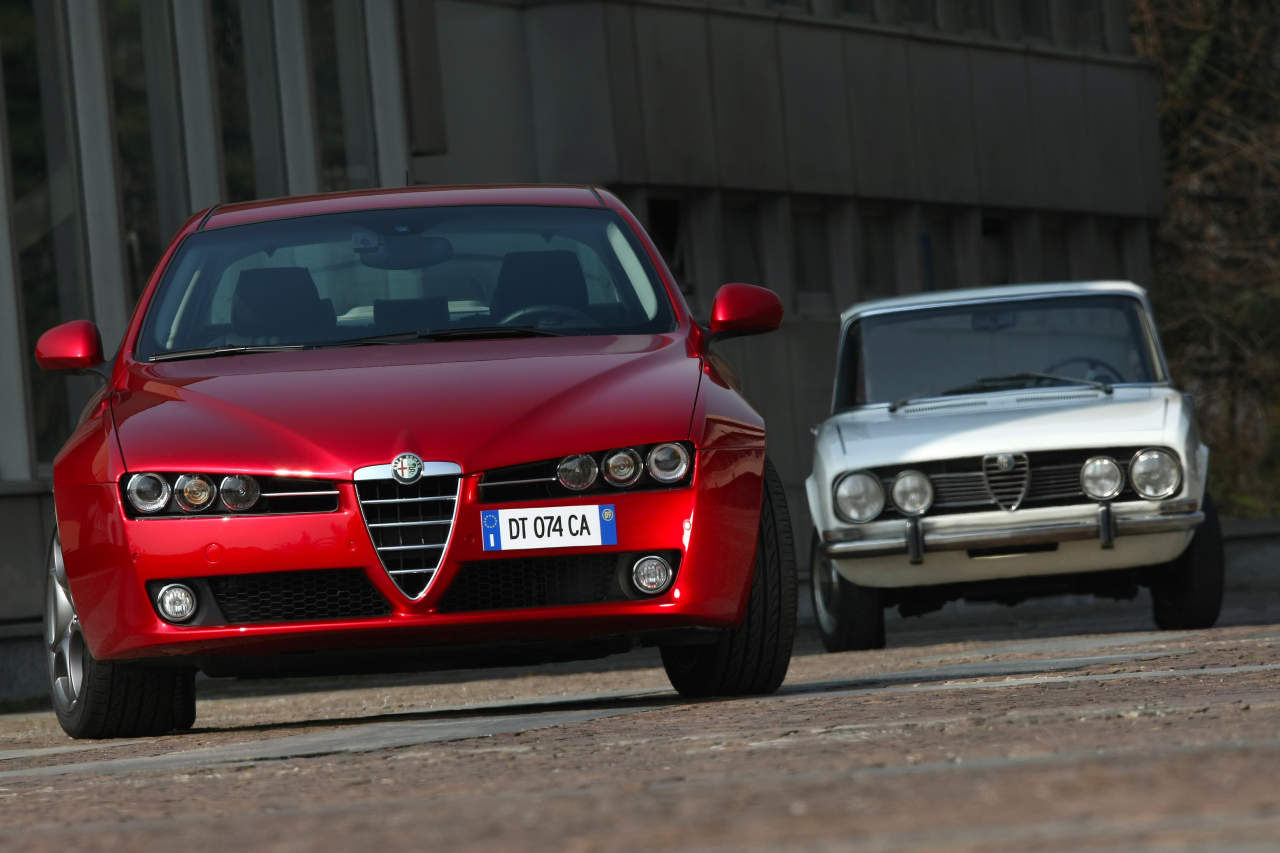
At the wheel of an Alfa Romeo you can feel history, it is as if you were driving all the Alfas of the past. Splendid image of an Alfa 159 with the new 1750 cc TBI engine, a historic displacement chosen precisely in memory of the legacy of the glorious Alfa 1750 of the 1970s, here in the background as if to follow the new saloon, as if to remind you what Alfa Romeo was and what it still is today and must never forget
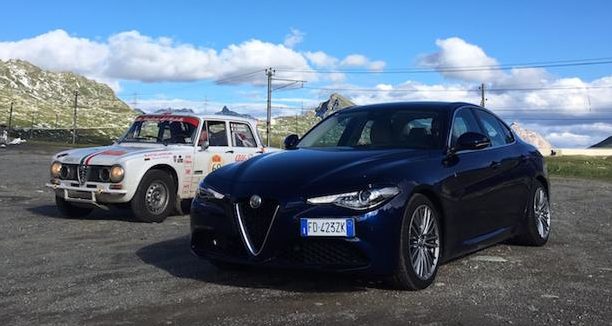
The new Giulia is the direct heir to the old one. If in the past there were no doubts about its originality, today many are smiling at the similarities between the Giulia and its competitors, in particular BMW. While it is only natural that the pursuit of the same goals should lead to similar results, on closer inspection the new Giulia is more inspired by previous Alfa cars than its German competitors.
Tell me, do you really think Alfa Romeo needed to copy the others?
Enjoy this roundup of old Alfas that the Giulia is more obviously inspired by than some German car that it would have supposedly ‘imitated’…
The competitors, especially the Germans, have a reputation for reliability and technological avant-garde. Without in any way detracting from the evidently excellent German car industry, the great success of these cars in Italy is due above all to prejudice: German cars are solid, well-built, reliable and technologically superior; Italian cars (anti-Fiat prejudice) are unreliable, poorly assembled without care, always at the repair shop, and less finished. Yet if you take a look around car forums, the level of satisfaction among Alfa Romeo owners is very high (myself included). There are many stories of expensive and poorly working German cars and incredibly reliable, well-finished and smooth Alfa Romeos.
But let’s also leave aside the prejudice about the quality of the interior, the ergonomics, the assembly, the finish. When it comes to performance, road handling, steering and brake precision, suspension, road grip, Alfa Romeo has never been second to none. It may not offer a wide choice of models, but if the car doesn’t hold up in bends, discharging power to the wheels is useless! In a test by the Italian monthly Quattroruote, carried out on the worst Italian motorway curve, the Alfa 156 sedan and Sportwagon recorded the 2nd and 3rd highest speeds respectively; the first was a Ferrari Modena! Supercars versus normal cars! No wonder then that the 156 won so much all over the world and was so much loved among Fiat-era Alfisti…
Indeed, Alfa’s past is full of sporting victories and technological innovation. Things that others have now also learnt to do and rather well, although perhaps with less ‘heart’. To understand how far ahead Alfa Romeo was in those days, various anecdotes are usually told. In one race, the Alfa driver was so far ahead that they made him stop and clean up the car to cross the finish line elegantly. The Giulia GTA 1600’s racing debut was in 1966 at Sebring in the USA (above), and it won by a lap over the Dodge 4500, followed by three other Alfas. Many GTAs did not return to Italy because they were purchased on the spot after the race. One can understand how a myth was created. Henry Ford, the founder of the famous American manufacturer, declared that he would take his hat off to the passing of an Alfa Romeo.
Today Alfa no longer runs and the innovation it proposes can no longer be as striking as in the early decades. Let’s say that it has set the standard and built a myth, a myth that others have not managed to create, not in the same way, perhaps, precisely because they were not the first to arrive at those innovations. When the Volkswagen group acquired Audi, the CEO said he dreamed of making it the German Alfa Romeo. It says a lot about the size of the myth.
Alfisti are very proud that Alfa Romeo gave birth to Ferrari, another Italian myth, perhaps “slightly” more famous in the world. Enzo Ferrari began his career as an Alfa Romeo pilot, and then continued as the shrewd manager of the racing department, the Scuderia Ferrari, into which he brought the best designer of the moment, the brilliant son of Hungarian immigrants Vittorio Jano, who was creating race-winning models at Fiat. Later distancing himself from Alfa Romeo, Ferrari brought with him the knowledge gained in racing (Jano also arrived after a stint at Lancia) and also the Alfa red, which was slightly changed in tone to create the famous Ferrari red. It is said that Enzo Ferrari wept the first time one of his cars managed to beat an Alfa Romeo.
Enzo Ferrari brings the Vittorio Jano genius to Alfa Romeo
True, many Alfisti are such because, as racing enthusiasts, they love to own a sports car. I want to make it clear at the outset that I have no intention of justifying anyone who gets behind the wheel of a sports car to excess on regular roads. For emulating our idols there are the racetracks; it may be expensive but it is the only way to avoid risks, especially to others.
The great thing about having an Alfa Romeo is its sporting flair, which doesn’t entitle you to race on the motorway or anywhere else, but which communicates an image of someone who retains a different spirit within him, a bit of staying young, not conforming to certain stereotypes and living life to the full, without missing a beat. Alfa Romeo decided at a certain point that it would develop cars for everyone derived from the models it competed with. And this was its winning card with the public, the reason why it is still so loved today.
Alfa Romeo commercial with Lucio Dalla’s “Nuvolari” song – Dedicated to alfisti…
The designers have always tried to maintain a sporty approach regardless of the model’s economy. The Alfa look has always commanded respect. The best Italian designers have endeavoured to give the various models throughout history that aggressive look that has made them famous the world over. No compromise was possible on the drivability of Alfa cars: performance was due. Exceptional road handling has always been a trademark. Acceleration has always been among the best in its category.
The Fiat-Chrysler group had decided to spin off the Alfa Romeo brand from Fiat, as had always been the case with Maserati and Ferrari. The intention was to relaunch Alfa by reviving the glories of the past. At the moment nothing has happened. Alfa Romeo has resumed racing in Formula 1 but we are still at an experimental level, it’s more marketing than anything else. The new Giulia that debuted in 2016 ushered in the new Giorgio platform with rear-wheel drive, a welcome return. The top engines have no reverential fear of the VW and BMW groups. The same applies to the Stelvio, the first Alfa Romeo SUV in history. If to some extent the Alfa Romeo myth had been tarnished after the entry of Fiat, FCA’s intentions seemed to be in line with the expectations of the most uncompromising Alfisti. But then something happened, perhaps sales fell short of expectations, and we were left with just the two top models, Giulia and Stelvio. When you drive an Alfa you will never be disappointed, but the lack of new models (I am always waiting for the Spider and Sprint versions as they once did) leaves you a little disappointed, if not worried.
Alfa 147 Q2 commercial – It well depicts the driving fun sought after by Alfisti
Only certain roads deserve an Alfa Romeo…
My first impact with Alfa Romeo was the legendary first Giulia. I was in primary school when I fell victim to its charm. The Giulia had the task of renewing the success of the glorious Giulietta of the 1950s. It was by no means easy. The Giulietta had had many admirers and had sold more than 130,000 units, a record for the time. But the Giulietta had not been Alfa’s first monocoque car. A monocoque is defined as a structure with body and chassis in a single frame, prepared for mass production. Separate body and chassis characterised the external-wheel cars of the 1920s and 1940s. The monocoque was modernity. The first Alfa Romeo so designed was the 1900.
il sito Alfa Romeo
Unofficial Alfa Romeo Wiki
Alfa Romeo su it.wikipedia.org
Pasolini e le sue Alfa su pasolini.net
Galeotta fu la Giulia
Alfa ed arte: la GT Veloce di Elisabetta Benassi
Elogio alla Follia su cronologia.leonardo.it
Erasmo da Rotterdam su cronologia.leonardo.it
Vittorio Jano su it.wikipedia.org

